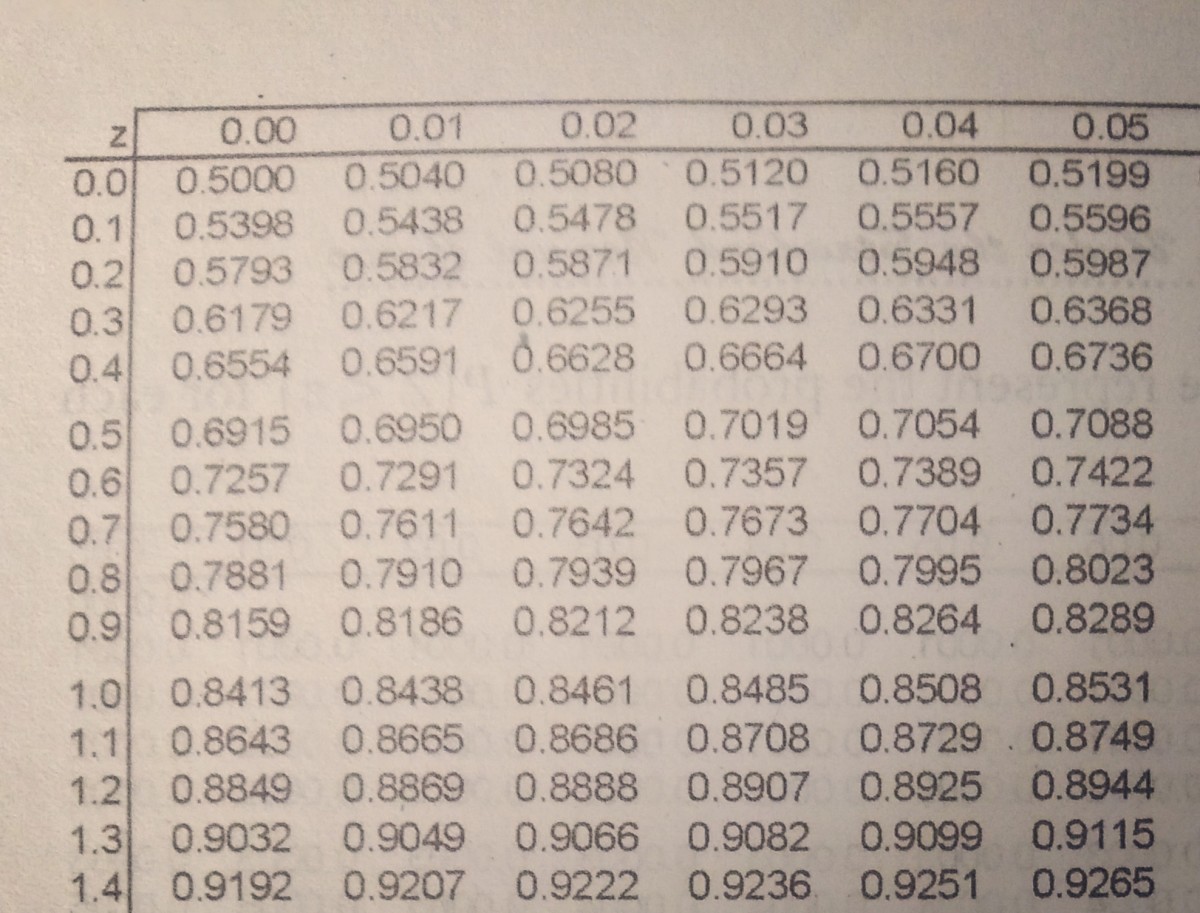Designing Research: Methodology, data collection, data analysis etc
DESIGNING RESEARCH AND METHODOLOGY INCLUDING DATA COLLECTION, INSTRUMENTS, ORGANIZATION OF DATA ETC
INTRODUCTION
Planning is an important part of human activities. Whatever people decide to do, for instance if a person would build a house, such person would first plan out how the building process would be: what would be required for the building to start and finish. Researchers are not left out in this activity of planning, and that is how we come about the concept ‘research design.’ Different scholars have defined research in different words but they always agree at certain points in that the following will always be part of their definitions: systematic data collection, analysis and interpretation. This reveals that research is not a haphazard venture; it is different from ordinary problem solving like helping to start a car that won’t start. A good research would always require some great level of effort and attention before it can be successful. Research has been defined by Osuala (1) as “the process of arriving at dependable solutions to problems through the planned and systematic collection, analysis and interpretation of data.”
Research design
Olaofe (90) defines research design as a plan, mode or the conceptual structure of the research and type of approach adopted in the study. He adds that it is the blueprint for the measurement of variables, collection and analysis of data. The choice of research design depends on the objectives of the research in order to be able to answer the research questions (Crotty, 144). Research design is a very important part of research process and it is believed that the credibility of a research work depends greatly on a good research design. Research design should be considered as soon as a researcher decides to do a research because that will give him a good view of what the research entails, and it should not be taken for granted that the success of the research is dependent upon the appropriateness of the design. It is the research process that involves the overall assumptions of the research to the method of data collection and analysis (Creswell, 121). The choice of research design depends on the objective of the research in order to be able to answer the research questions.
A research design is not just a work plan. It functions to ensure that the evidence obtained enables one to answer the initial questions as unambiguously as possible. It is important that in the process of designing a research, the researcher should ask research questions, what type of evidence is needed to answer the questions in a comprehensible and believable way. It fits into the whole research process from the start to the end.
Sometimes a researcher may have designed a questionnaire or start administering interviews before he begins to look out for how his results will help in answering the research question, but this is wrong. Research design is not the same as method in the sense that while method can refer to how data is collected, research design is a logical structure of the processes involved in the research. It is a detail outline of all the processes in a research.
The model of research design as identified by Maxwell (216) is made up of five components. He says that a good research design should have each of these components playing their distinct roles leading to a desired conclusion. They are goals, conceptual framework, research questions, research methods and validity.
Goals: This requires that one is able to say what he is going to study. He has to consider his reasons well enough to know whether or not he should continue with the research. One is likely to spend a lot of money and time carrying out this research; but is it worth it? Would anybody consider the researcher’s effort worthwhile? The researcher’s goal may be personal, practical or intellectual. Personal goals may come from certain inspiration that comes from within the person making him to want to participate in some problem solving endeavour or change some existing situations or simply to advance his career. Practical goal is different from personal goal in that it is not about one’s personal desire or something more beneficial to only the same person. It concerns meeting people’s needs, something that may probably benefit a large group of people. Intellectual goal may require one to engage in a research in order to increase one’s understanding of some existing phenomena as it relates to one’s intellectual requirement. Of course one is expected to have a goal as driving force making him to do a research, and this goal should be captured in his design.
Conceptual framework
This is where one needs to know what he thinks is going on with what he intends to study. What are the existing arguments about it and how much information about the situation does the researcher already have? What assumption is the researcher working on? This is where he finds the research problem. A well understood conceptual framework will enhance ones research process. One will not waste time on questions that have been answered already. Having a good conceptual frame work will help the research to determine the standpoint from which the research should be addressed.
Research questions
This has to do with what one wants to understand at the end of the research. What is there to learn? This will guide ones process by helping one to remain focus on the research goal. The researcher has to ensure that his research questions are answerable. They are not too general, but specific. Where there is too diffused research question, data collection becomes more difficult.
Research Methods
research methods answer questions like, what will one actually do in conducting this study? What approaches and techniques will one use to collect and analyse his data? The researcher should be able to identify the instruments that will be useful in carrying out the research.
Validity
this seeks to answer the questions of how the research results and conclusions might be wrong. What are the plausible alternative interpretations and validity threats to these, and how does the researcher intend to deal with these threats. How can the data he has collected, or that he could potentially collect, support or challenge his ideas about what is going on? Why should the result of the research be trusted? These questions should be asked by the researcher and answered by same, and the answers would tell whether the research should or should not continue with the intended research.
Research designs vary according to the period of time, and place and objective of research. This means that a researcher is expected to consider the time he is carrying out his research. He should know whether there is any possibility that his result can be affected by the period of time the data is collected.
RESEARCH METHODOLOGY
Research methodology describes the method which the researcher will use in gathering relevant data for his research work, deciding the instrument needed for the data collection, the method used in ensuring that the instrument achieves the intended result and the method employed in data analysis. It involves experiment design with which the researcher establishes a dependable process and involvements that can achieve a reliable result.
However, the methodology needed for a research is chosen according to type of research to be done. A research can be experimental or survey.
Experiment
The purpose of experimental research is to achieve functional relationships among phenomena under controlled conditions (Osuala, 219). This research begins with a hypothesis that is needed to be verified or refuted. In this method of research, a researcher assigns participants to two groups: one is the control group; the other is the experiment group. There is a comparison of the control group to the treatment group. The control group is not affected by the research applications because it is intended to confirm how differently the experiment group will react. Experiments can be either true experiment or quasi-experiment.
True-experiments
This often refers to laboratory study, however, it is not always so. It is defined as an experiment conducted when all other variables are controlled except the one under study. It involves two groups: the experiment group and control group. Each group will receive a level of dependent variable.
The control group provides a baseline for comparison. The experiment group receives the treatment that determines the result needed by the experimenter.
Quasi-Experiments
Quasi-experiment requires less effort than true-experiment because the group may not be randomized (Ali, 66). This experiment is different from true-experiment because it uses pre-existing groups or naturally formed group. That is, the researcher goes to a group that already is in the condition which meets his need. When the study includes naturally formed groups, the variable under study is a subject variable. But in a situation where the study includes pre-existing groups other than the naturally formed ones, the variable involved is independent variable.
Observational research method
This type of research depends largely on observation and recording. This is also usually qualitative in nature. For example, a psychological case study would require close observation which may involve interview of the client. At the end, the record got from the observation will be analysed. A researcher may want to study the social behaviour of some group of people, and this may require that he observes them from outside or get himself involved in their activities. While he does this, he takes down notes on his findings.
Survey research method
This entails the collection of data by using a questionnaire to discover the opinions of a population, based on sample of population (Creswell, 2009). According to Amin (236) sampling is the process of selecting elements form the population in such a way that the sample elements selected represents the population. Zikmund and Babin (64) say that survey is a research technique in which responses are collected through structures instrument from a sample in some form or the behaviour of respondents is observed and described in some way. Survey researchers are interested in the accurate assessment of the characteristics of whole populations of people. But this is done through investigation of a sample population at the end of which the result is generalised. Surveys are concerned with present situations rather than historical, and it usually focuses on people: their beliefs, opinions on certain issues, behaviours attitudes etc.
Correlational research method
This research method is used when one wants to do a relational study (co-variation of two or more variables).
The researcher may wish to investigate the co-variation of cigarette smoking and a variety of lung diseases. Techniques needed in this research involve collection of data on the co-varying items.
Populations and samples
When conducting research, one must often use a sample population as opposed to using the entire population. It is important to use a sample population because it would cost much money and time to conduct a research on a population, say about forty million people, observing every individual. That may obviously be an impossible venture. And for instrument, if it is a research that will require killing of the research target, let’s say rats, would the researcher need to kill all the rats in the environment? Certainly no. that is why sampling is a vital aspect of research.
DATA COLLECTION
A good research will not be achievable without collection and analysis of data. The collected and analysed data determines the end result of the research. If a wrong data is collected or the process of data collection is not the right one for the intended research, the analysis will be faulty and that will resort to a wrong result. It is the responsibility of the researcher to ensure that he/she makes use of relevant data and valued instrument of data collection and analysis.
Data can be primary or secondary
1. Primary data is collected for validation of hypothesis. It involves the gathering of facts and figures relating to the object under investigation. Collection of primary data may involve, sampling of population, field experiment, interview, questionnaire, telephone communication and observation.
2. Secondary data are usually documented conclusion or results. The risk involved in secondary data is that they may not give the exact information needed, and they may not be quite suitable for the present research situation. They depend on previous researches done by other people and result of experiments. Secondary data do not provide first-hand information. They could even be affected by improper conclusions or affected communication process. It is also possible that the researched situation has changed since the time.
Sources of data collection
There are several ways a researcher can collect data for his research. They include the following:
Archive research
Libraries
Interview
QUANTITATIVE AND QUANLITATIVE DATA
Data can be quantitative or qualitative all depending on the nature of the variables under study. If a researcher will use quantitative research method, he is possibly measuring variables and verifying existing theories or hypothesis, or questioning them. Quantitative research is most times referred to as hypothesis- testing research. Study is done with statements of theory from which research hypotheses are derived after which an experimental design is established in which the variables in question are measured while controlling for the effects of selected independent variables. Quantitative research method refers to the systematic investigation of quantitative properties and phenomena and their relationships.
Quantitative research involves collection, analysing and interpreting data by observing what people do and say. It refers to the meaning, definitions, characteristics, symbols, metaphors and description of things
Qualitative researchers study things in their natural settings attempting to make sense of phenomena in terms of the meanings people bring to them. The inquirer often makes knowledge claims based on the various meanings of individual experiences. Qualitative research is used when one wishes to understand measure, look at, describe and understand experiences, ideas, beliefs and values.
RESEARCH INSTRUMENTS
Instruments are used to test or measure quality or quantity/frequency of data for the research work. The purpose of the instrument is to elicit the data for study. It also refers to the methods to use in collecting data for the research. The researcher here must be careful that whatever instrument is chosen for the data collection must be valid and reliable. The validity and reliability of any research work depends largely on appropriateness of the instrument used. Whatever procedure the researcher chooses to collect data for the work, it must be critically examined to check the extent to which it will give the expected result. Using previously validated collection instruments can save time and increase the credibility of the research.
Some suggested research instruments for collecting data may include:
- Questionnaires: this is a collection of well thought out questions that are sent to people who would answer them, and the answers would be brought together to form data for the research.
- Interviews: this is a method of data collections whereby the researcher goes to have a discussion with the client in other to get useful information through the responses of the interviewee to form part of the data in his research.
- Observation: this requires that the researcher goes to research object and observes it go gather the needed information that may refute or support his initial assumption.
- Reading: written documents in the forms of books, journals, periodicals and newspapers can be consulted for relevant data in a research.
- Review of documents or records: other documents that have been reviewed by other people can equally form part of relevant sources of data for research works. The researcher can find needed information in such documented items.
- Telephone: telephone can be used to reach sources of information that are far from the location of the researcher. The cost of phone call can however be a problem such that the researcher may not be able to get as much information as needed advance his research work
- Audio or video recordings: the researcher can find audio or video recorded discussions or activities that would provide valid information for his research. The videos can be stored in libraries or they may belong to individuals.
Factors to consider when selecting an instrument
• Well-tested factorial structure, validity & reliability
• Availability of supportive materials and technology for entering, analysing and interpreting results
• Availability of normative data as a reference for evaluating, interpreting, or placing in context individual test scores.
• Applicability to a wide range of participants
• It can be used as personal development tool/exercise
• It should be User-friendly
• Does it require permission from the owner to use it?
• Financial cost
• Amount of time required to check the validity and reliability of tests and instruments. Do they really measure what they claim to measure? Do they measure consistently over time, with different research subjects and ethnic groups, and after repeated use? Research articles that used the test will often include reliability and validity data.
Ali (1996) suggests that there is a need for the researcher to give adequate and thoughtful consideration to issues about the data of his study. Asking these questions will prove very useful here: would the instrument proposed for use in collecting such proposed data be the correct and reliable one for doing so; how would the data be collected and by whom; having collected the data, how would it be presented; how would the data be analysed appropriately, based on the type of data collected. These issues will influence how the researcher is eventually able to reach conclusions as validly as possible in light of the research hypothesis or questions.
ORGANIZATION OF DATA
Organizing data gathered for the study is as important as collecting the data in the first place. An unorganized data may lead to confusion and probably interpretation errors. To avoid this, the researcher, in attempting to describe his data, must arrange his data in a chosen order. Ali (1996) suggests two ways – frequency distributions or graphic form.
Frequency distributions refer to the arrangement of the values or account of occurrence that variables take in a sample. Each variable entered in the table is assigned a value that shows the frequency of occurrences of values within an investigated group. The information is entered in a frequency distribution table.
The graphic form involves the presentation of values graphically. This can be shown using a bar chart, histogram, pie chart and others.
DATA ANALYSIS
According to Dey, (pg 31) “You can’t make an omelette without breaking eggs. And—to extend the aphorism—you can’t make an omelette without beating the eggs together. ‘Analysis’ too involves breaking data down into bits, and then ‘beating’ the bits together.
It is a process of resolving data into its constituent components, to reveal its characteristic elements and structure. Without analysis, we would have to rely entirely on impressions and intuitions about the data as a whole. While our impressions and intuitions certainly have their place in analysing data, we can also benefit from the more rigorous and logical procedures of analysis.”
After data is collected, research does not stop there or it will be work equal to zero. The collected raw data must be analysed and interpreted and be made simple for public consumption if need be. It is after the raw data has been interpreted that one can arrive at a value test of hypotheses. In a simple way, data analysis can be defined as the ordering and breaking down of data into smaller observable parts. The figures derived from the data are calculated.
In analysing data, researchers need to deal with certain issues like the following:
1. The researcher needs to have the required a skill to carry out the analysis
2. The researcher must protect himself from any tendency of being influenced thereby drawing unbiased inference
3. There should be provision of honest and accurate analysis to avoid misleading of research beneficiaries
4. Data analysis must be restricted to the exact collected data
5. Selecting data collection method and data analysis method must be done concurrently
CONCLUSION
Research design has been seen to be a core requirement in carrying out a research. A researcher should endeavour to have a good design of the research process after getting his research topic. Until then, he should not start collecting data or deciding what instrument to use. He should be able to have an idea about how to start the research work and how the beginning should link through other processes to the end of the research, and he school be convinced that the designed processes should lead to an acceptable result.
Research design is not the research itself but without it, the research will be faulty.
WORKS CITED
Ali, Anthony. Fundamentals of Research in Education: Awk. Meks Publishers. Nigeria. 1996.
Alison Wray and Aileen Bloomer. Projects in Linguistics: A Practical Guide to Researching Language 2nd edition. London: Hodder Education, 2006.
Amin, M.E. A Social Science Research: concepts Methodology and Analysis. Makerere University. Uganda, 2005.
Creswell, John W. Educational Research: Planning, Conduction and Evaluating Quantitative and Qualitative Research3rd Edition: upper saddle River. Pearson, 2008.
Dey, Ian. Qualitative Data Analysis: Routledge. London and New York, 1993.
Eguzoikpe, E. E. Research Methodology: a Practical Treatise for Students: Nigeria. Quality Function Publisher.
Maxwell, Joseph A. Qualitative Research Design 2nd edition: London. Sage, 2005.
Olaofe, I. A. Research Writing for Academic Growth: Zaria. Ahmadu Bello University Press, 2010.
Osuala E. C. Introduction to Research Methodology, 3rd edition: Nigeria. African-First Publishers Plc, 2005.






